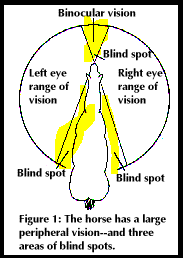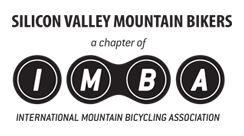This information guide was created to help off-road cyclists, and describes how to pass hikers and equestrians safely and politely when riding a mountain-bike.
While mountain biking, please remember that you are part of a large community of trail users who must work together to preserve our open spaces. In the San Francisco Bay Area, we are very lucky to have so many trails open to mountain cyclists. The only way we can maintain and improve upon this level of access is through continued work with the land owners, other trail users, and education of all off-road cyclists on the appropriate trail etiquette. As always, remember to follow the IMBA’s Rules of the Trail.
How to Pass Hikers
Most people who don’t ride bikes have no idea what “on your left” means. If you say this it may actually cause them to move to the left, causing an accident !
Here are a few steps to follow instead :
- Greet the hiker – a simple “howdy” or “hi, nice day !” will do. If you have a bell, ring it once or twice to let them know of you are there.
- Slow down (!) to about the same speed as the hiker. Failure to do so can cause them to panic and consider writing a letter of complaint to whomever owns the land you are riding on.
- If the trail is too narrow for both you and the hiker, then you must stop and yield the trail to them. If they wave you on, you may go ahead.You may wish to decline and insist that they pass, claiming that your knee has been bothering you anyway, and chat about the flora and fauna you’ve observed. Our sport needs all the friends it can get.
- If you are approaching from behind, and the hiker appears confused and stops in the middle of the trail, stop and politely say something like “pardon me, may I pass on your left ?”Small children and elderly people may not know how to behave around cyclists, so be polite !
Consider buying a bell – compact models can be found in most bike shops fairly cheaply. These little gadgets help hikers, walkers, and runners know that you’re a considerate bicyclist, and there is talk of making bells required on some trails.
Again, don’t ever pass someone on foot at high speed.
How to Pass Horses/Equestrians
Cruising down your favorite stretch of singletrack, you alertly notice something in the trail ahead. Actually you don’t have to be too alert, because this something is BIG.
“Long nose, pointy ears and a person on its back,” your mind calculates rapidly as your fingers automatically bring you and your rig gently to a stop. “Must be a horse.”
Talking about anything that comes to mind — the weather, trail conditions, what you had for breakfast — you move off the trail (to the downhill side if possible) and stand quietly as you ask the riders if they have enough rooom to pass. Careful not to make any sudden movements as they approach, you continue chatting until they have passed you by.
Then it’s back on the bike, up to speed and back into “the zone.”
It seems simple enough. Good trail etiquette and safety call for mountain bikers to yield to other users. But when that other user is a horse, some extra precautions are necessary.
Why? You could call it the nature of the beast.
The most important thing for a bicyclist to know is that a horse reverts to instinct when it is frightened. As the species developed, survival depended on a good flight response, and that instinct is never far from the surface in a horse. In short, if you spook a horse, it will try to escape. This may include a sudden turn or rearing, which could unseat a rider.
The next important thing to keep in mind is that horses are big and powerful. If you fall and your bike lands on you it’s usually not a big deal. Twelve hundred pounds of horse is another matter.
So it’s very important, for your safety and the equestrian’s, that you not spook a horse. It’s also important, if we are to share trails with equestrians, that we get along.
Some horses are so tame that nothing fazes them. Others will go ballistic at the slightest pretext. Most are somewhere in between. When you see a horse, assume first that it is on the flighty side. Ask the rider if it is OK around mountain bikes and if there is anything he or she needs you to do. Often, equestrians prefer voice alerts over bells – the human voice helps the horse identify the cyclist as a friendly human and not a potential threat or predator. A greeting such as “Hi! Great weather today!” is appropriate coming from in front or behind. Horses generally recognize the human voice as safe and a spoken salutation helps offset the potentially threatening appearance of a bike. This is especially important when approaching a horse from behind, because horses spook more easily in this situation.
On tight single track it is best to get off your bike and let horseback riders pass. Get off on the uphill side so that the horse can’t slip down on you or kick you.
A few signs can clue you in that a horse is nervous. Horses are fidgety and susceptible to other horses’ behavior. If a horse is halted on a narrow trail it may not necessarily stand still, and it may lose its footing causing it to attempt to save itself from falling down a slope. This in turn will agitate other nearby horses that interpret the situation as dangerous. Some horses may try to turn around. This can be treacherous for the horseback riders.
- The first clue is the ears. Pointed ahead they are in the “alert” mode. This isn’t necessarily bad. It just means the horse is paying attention. Ears laid flat back against the head mean the horse is in a nasty mood, and probably about to bite or kick. Sometimes a horse will flick its ears back and forth slowly. This means it’s on mental cruise control, and possibly trying to keep flies from landing.
- A more significant clue, but one that requires being closer, is the eyes. If they are rolling and really wide open, look out. Half open, the horse is relaxed.
- There are other clear indicators of agitation. A horse that is prancing, sidestepping and snorting is obviously close to coming unglued. A twitchy, swirling tail is another indicator of equine anxiety.
If you do see a horse in an agitated state, move slowly away if possible, and talk in a calm voice. Do not make any sudden moves. The rider will probably give you directions. But don’t assume, if the rider says nothing, that you are being ignored. It might be that horse and rider are deep in conversation, one you can’t hear because the rider is “cueing” the horse nonverbally, with subtle pressure of knee, heel, toe and reins.
In summary, here are a few steps to follow when passing equestrians :
- Greet the equestrian and the horse – “howdy”, “hi, nice day !”, or “what a beautiful horse!” – so the horse knows you are a human, and not a predator.
- Ask the equestrian for instructions on how to pass – it may be necessary for you to stop completely and let the horse pass, depending on the width and condition of the trail.
- Pass slowly and steadily, only after the equestrian gives you the go-ahead. Sudden movements can spook a horse.
Understanding horses
Horses are prey animals and have been bred only recently into large animals. In prehistoric times they were much smaller. Horses may still think they are small. Even though to us they are truly powerful and potentially dangerous animals, horses don’t see themselves this way. Therefore it is erroneous to assume that a horse has confidence and a sense of security just because it is big and powerful. Small, seemingly innocuous things will spook them. When a rider is perched on the back of a scared horse, it can be a precarious situation.
Horses are farsighted, so things up close are blurry. They cannot see directly in front or behind themselves – see image below. When a bicyclist comes around a blind corner and suddenly appears within 50 ft of the horse, the horse cannot readily identify what is heading towards it. Since the horse is a prey animal it is normal behavior for it to flinch and desire to flee. Moving into the horse’s line of sight is very helpful for the horse and rider.
Other Considerations
Remember also that just as there are beginning bicyclists, there are rookie equestrians. Just as we lose control of our bikes, some of them may not be in full control of their animals.
In the parking lot, try to be considerate of the needs of equestrians. One former riding acquaintance (and he is “former” because of this incident) pulled his car right behind a horse trailer, making it impossible for the riders to load up without moving their rig. When I pointed this out to him, he said that he had done it on purpose. I didn’t say anything at the time, but never rode with him again. Today I wouldn’t be so shy. I see people like that as jeopardizing my access to trails, and they deserve to be chewed out for their stupidity.
Another consideration in the parking lot is for the space a pickup and trailer needs to maneuver. Try not to crowd turnaround and parking spaces.
Getting on with equestrians is a matter of a little knowledge, consideration, common sense and awareness. And getting along with equestrians increases our chances for sharing trails, so it’s well worth the effort.
If you really want to gain an understanding of the equestrian’s point of view, try riding a horse. It may not be the same feeling as gliding down a smooth stretch of singletrack, but it’s a lot of fun. And the hills are definitely easier.




